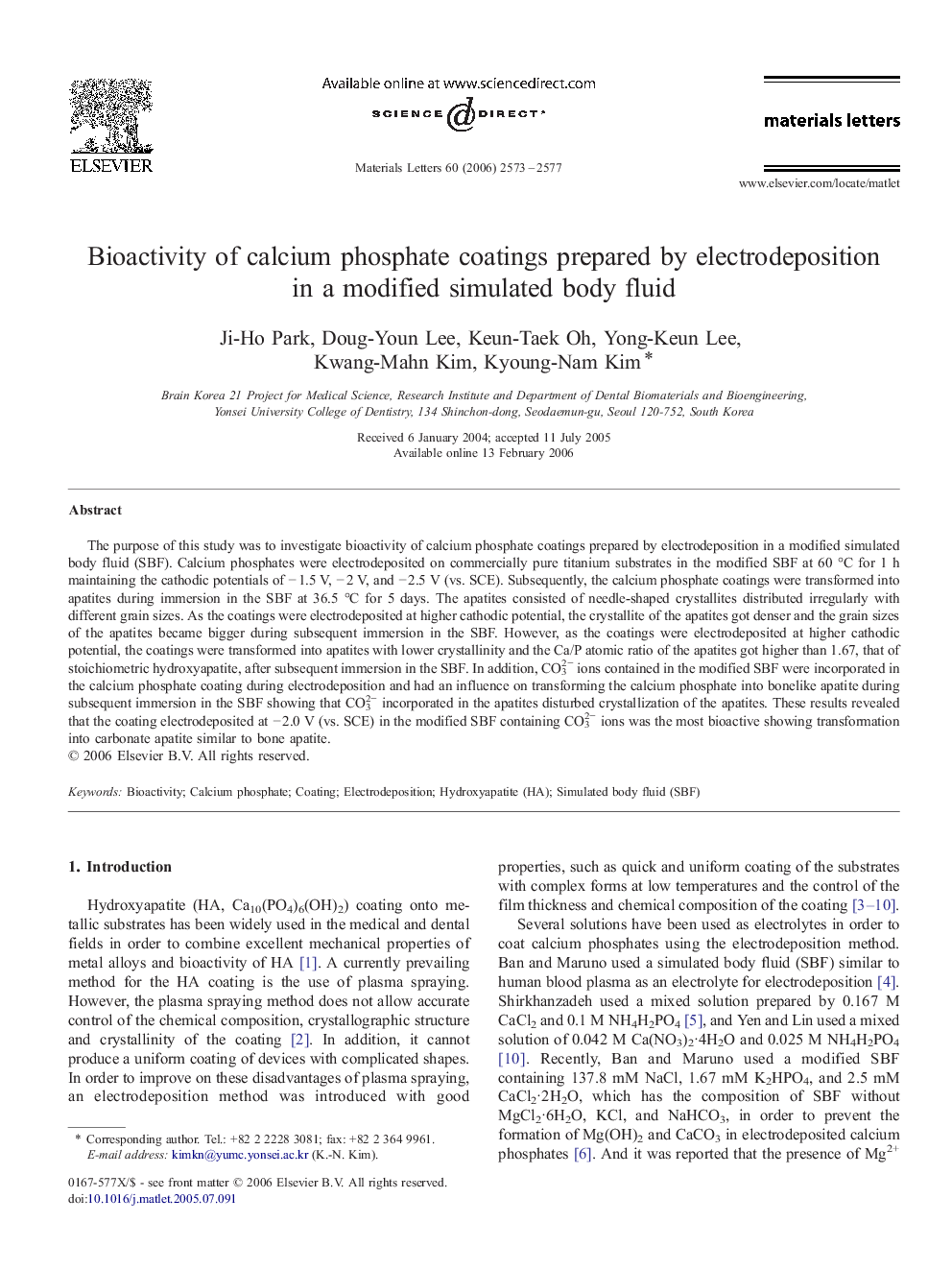| Article ID | Journal | Published Year | Pages | File Type |
|---|---|---|---|---|
| 1652327 | Materials Letters | 2006 | 5 Pages |
The purpose of this study was to investigate bioactivity of calcium phosphate coatings prepared by electrodeposition in a modified simulated body fluid (SBF). Calcium phosphates were electrodeposited on commercially pure titanium substrates in the modified SBF at 60 °C for 1 h maintaining the cathodic potentials of − 1.5 V, − 2 V, and − 2.5 V (vs. SCE). Subsequently, the calcium phosphate coatings were transformed into apatites during immersion in the SBF at 36.5 °C for 5 days. The apatites consisted of needle-shaped crystallites distributed irregularly with different grain sizes. As the coatings were electrodeposited at higher cathodic potential, the crystallite of the apatites got denser and the grain sizes of the apatites became bigger during subsequent immersion in the SBF. However, as the coatings were electrodeposited at higher cathodic potential, the coatings were transformed into apatites with lower crystallinity and the Ca/P atomic ratio of the apatites got higher than 1.67, that of stoichiometric hydroxyapatite, after subsequent immersion in the SBF. In addition, CO32− ions contained in the modified SBF were incorporated in the calcium phosphate coating during electrodeposition and had an influence on transforming the calcium phosphate into bonelike apatite during subsequent immersion in the SBF showing that CO32− incorporated in the apatites disturbed crystallization of the apatites. These results revealed that the coating electrodeposited at − 2.0 V (vs. SCE) in the modified SBF containing CO32− ions was the most bioactive showing transformation into carbonate apatite similar to bone apatite.
